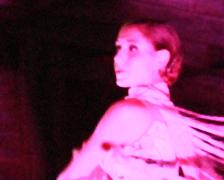[dropcap style=”font-size:100px; color:#992211;”]O[/dropcap]r just outsource to an expert….
Not only does practice make perfect, it also makes for more efficient generation of neuronal activity in the primary motor cortex, the area of the brain that plans and executes movement, according to researchers from the University of Pittsburgh School of Medicine.
Their findings, published online today in Nature Neuroscience, showed that practice leads to decreased metabolic activity for internally generated movements, but not for visually guided motor tasks, and suggest the motor cortex is “plastic” and a potential site for the storage of motor skills.
The hand area of the primary motor cortex is known to be larger among professional pianists than in amateur ones. This observation has suggested that extensive practice and the development of expert performance induces changes in the primary motor cortex, said senior investigator Peter L. Strick, Ph.D., Distinguished Professor and chair, Department of Neurobiology, Pitt School of Medicine.
Prior imaging studies have shown that markers of synaptic activity, meaning the input signals to neurons, decrease in the primary motor cortex as repeated actions become routine and an individual develops expertise at a motor skill. The researchers found that markers of synaptic activity also display a marked decrease in monkeys trained to perform sequences of movements that are guided from memory — an internally generated task — rather than from vision. They wondered whether the change in synaptic activity indicated that neuron firing also declined. To examine this issue they recorded neuron activity and sampled metabolic activity, a measure of synaptic activity in the same animals.
All the monkeys were trained on two tasks and were rewarded when they reached out to touch an object in front of them. In the visually guided task, a visual target showed the monkeys where to reach and the end point was randomly switched from trial to trial. In the internally generated task the monkeys were trained to perform short sequences of movements without visual cues. They practiced the sequences until they achieved a level of skill comparable to an expert typist.
The researchers found neuron activity was comparable between monkeys that performed visually guided and internally generated tasks. However, metabolic activity was high for the visually guided task, but only modest during the internally generated task.
“This tells us that practicing a skilled movement and the development of expertise leads to more efficient generation of neuron activity in the primary motor cortex to produce the movement. The increase in efficiency could be created by a number of factors such as more effective synapses, greater synchrony in inputs and more finely tuned inputs,” Dr. Strick noted. “What is really important is that our results indicate that practice changes the primary motor cortex so that it can become an important substrate for the storage of motor skills. Thus, the motor cortex is adaptable, or plastic.
Source: University of Pittsburgh Schools of the Health Sciences
Photo: Sean Keenan

Some of the news that we find inspiring, diverting, wrong or so very right.





















